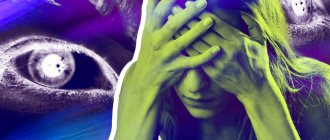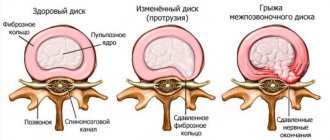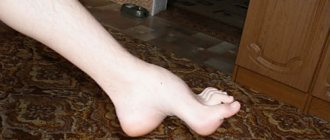05/24/20205 minutes read 2189
Schizophrenia is a chronic mental illness. It affects about 1 percent of the population, although the exact prevalence of the disease is difficult to determine.
People with this condition experience:
- hallucinations
- crazy ideas
- disordered thoughts
- disorganized speech
- withdrawals or breaks from reality
The disease is divided into stages or phases. Each phase is characterized by certain characteristics.
Stages of schizophrenia
The stages appear one after another and include the following symptoms:
Prodromal.
This initial stage (or first stage) is often not recognized until the disease has progressed. The initial stage is easy to miss.
Active.
Also known as acute schizophrenia, the manifestation stage. This stage is the most noticeable. People show clear signs of psychosis, including hallucinations, suspiciousness, and delusions. It differs sharply from the first, initial stage.
Residual.
Although the term is not a recognized diagnosis in the DSM-5, it is still used to describe a condition in which people with schizophrenia have fewer obvious symptoms (the psychosis is muted). However, some symptoms are still present. Remission—sustained improvement—should not be confused with the final stage of a psychotic episode. Remission occurs after the last residual stage
What are the symptoms of each stage?
Each stage has its own signs and symptoms that help classify it.
Only the acute stage of schizophrenia is characterized by a “sudden” onset of symptoms. A person may remain in the prodromal stage for years, and symptoms will appear subtly and gradually.
In the initial, prodromal stage, the signs are not always obvious, as you will see when you read about this.
Prodromal symptoms of schizophrenia
The first and early signs of the first stage can be overlooked because they are common to many other conditions, such as depression.
Often the prodromal initial stage is recognized and diagnosed only when schizophrenia becomes acute.
Early symptoms of schizophrenia in this phase may include:
- withdrawal from social life or family activities
- isolation
- increased anxiety
- difficulty concentrating or paying attention
- lack of motivation
- difficulty making decisions
- change in usual lifestyle
- neglect of personal hygiene
- sleep disturbance
- increased irritability, it is usually invisible at the first stage.
Symptoms of the acute phase of schizophrenia
At this stage, the signs are obvious to everyone, even non-psychiatrists.
Research shows that by the time a person enters this phase, signs of the prodromal initial stage have been evident for about 2 years.
Symptoms include:
- hallucinations (the patient hears, what no one hears or sees, feels, what no one sees or feels)
- paranoid delusion
- confused and disorganized thoughts
- disordered speech
- changes in motor behavior (eg, useless or excessive movement)
- lack of eye contact
Symptoms of the residual stage
Although they are no longer used in diagnosis, some clinicians still highlight this stage when discussing the signs and progression of the disease.
The suffering in this phase of the disease resembles the symptoms in the first initial early phase. They are characterized by low energy and lack of motivation, but some elements remain. Some people may return to the acute state again, this is called a relapse.
Symptoms of the final stage include:
- lack of emotion
- social isolation
- low energy level
- eccentric behavior
- illogical thinking
- conceptual disorganization
What causes schizophrenia?
It is not clear why people develop the disease. Likewise, it is unclear how and why the pace of progression through the stages varies from person to person.
Researchers believe that a combination of factors causes initial, early chemical and structural changes in the brain. Ultimately, these changes lead to disease. These same factors influence when and how quickly a person moves from one stage to another. From initial to remission, if you get to the doctor on time.
Researchers believe these factors may be:
- Genetics.
If you have a family history of the disease, you are more likely to get it. However, having a family history does not mean you will definitely have the disease.
- Hormonal changes.
Researchers believe that hormones and age-related physical changes in the body may be a factor. The early stages of the disease often begin at a young age, during a period of major hormonal changes. On average, the initial, first signs of the disease in men appear at the end of adolescence and early 20s, and in women - later. Their first signs, as a rule, appear in their mid-20s to early 30s.
- Biological.
Neurotransmitters transmit signals between brain cells, and chemical changes can damage or weaken these signals. This can lead to illness.
- Brain structure.
Changes in the shape or structure of the brain can also disrupt communication between neurotransmitters and neurons.
- Ecological.
Researchers believe that early exposure to certain viruses can lead to schizophrenia. Likewise, lifestyle choices can influence disease risk. This also includes exposure to drugs or alcohol or other potent substances.
Delusions and hallucinations
These are the so-called positive or acquired symptoms of the disease. False auditory or visual perceptions can be reproduced by one’s own subconscious from any organ (legs, arms) or inanimate object. A person becomes fixated on these voices and images, showing indifference to the outside world and the people around him. There is a persistent disturbance in the patient’s emotional background.
The presence of these signs is considered mandatory for the diagnosis of schizophrenia. If delusions manifest themselves even in the early stages of the disease, then hallucinations are more difficult: they may not exist at all.
Delirium can occur in several directions:
- • stalking – the most common in schizophrenia, when the patient is sure that he is being watched by neighbors, intelligence agencies, aliens, etc.;
- relationships - a strong belief that all events that occur are not random, but are directly related to the patient. He finds symbols, signs, some clues in every little thing and takes it personally;
- influence - a person’s confidence that his thoughts are open to everyone around him. At the same time, someone controls them from the outside, but he does not control them on his own.
- greatness - the patient firmly believes in his great mission on the planet or in his possession of unique abilities.
In the presence of any delusional manifestations, a person becomes asocialized, becomes unsociable, and does not make contact. The period of the attack may manifest itself as aggression.
How is schizophrenia diagnosed?
The diagnosis is often made in the acute stage. That's when things become most obvious. Less commonly, the disease is diagnosed in the prodromal stage, when the most prominent symptoms are disordered thoughts and maladaptive behavior patterns.
At this point, the doctor collects anamnesis, including interviewing family members, to understand when the early problems began and how they were expressed. In the first phase, the causes are often not recognized while the person is active and more or less socialized.
Once the diagnosis is made, the doctor, based on the patient’s behavior, will also be able to predict when the acute stage will end.
Symptoms of the first stage
Doctors are not unanimous about the causes of schizophrenia. Some argue that this is a genetic disease, others are sure that the trigger for it is stressful situations and psychological fatigue.
The first symptoms of this mental disorder usually appear between the ages of 18 and 35. However, there are known cases of earlier or later manifestations. It is especially difficult to diagnose mental illness during adolescence, when the child enters a transition period.
It makes sense to be wary if you have noticed the following in yourself or a loved one:
- withdraws into himself, becomes unsociable, avoids communication as much as possible;
- any interest disappears, apathy and indifference to everything that happens around arises;
- physical sensations weaken or become dull. At this time, a person may not feel hunger, pain, and forgets about basic hygiene rules;
- Inappropriate emotions arise in outbursts - a person reacts ambiguously to an ordinary question, causeless laughter or unreasonable aggression appears.
The main symptom of schizophrenia is a change in the idea of reality and one’s place in it. Few people can adequately assess their mental state, because a person with such a deviation is firmly convinced that he himself is healthy, and the people around him are sick.
People are accustomed to attributing their oddities to fatigue, stressful situations, and external influences. Therefore, a significant part of patients do not go to the doctor. Thus, precious time is lost, the disease progresses, and treatment will now require longer and, unfortunately, will be less effective.
It is important to take into account that you should not give yourself a definitive diagnosis of schizophrenia. The specified prerequisites are only the basis for consulting a doctor. Often, the above symptoms are indeed the result of depression, characteristics of the puberty period, and the consequences of experienced psychological trauma. They only indicate that a person is experiencing something within himself. It is very important at this moment to try to talk with him, if necessary, to convince him to undergo examination by a specialist.
At the first stage of identifying the disease, the doctor usually makes a diagnosis of “schizophrenia-like disorder”. After this, the patient is monitored. During this period, the dynamics of symptoms and their modification are monitored. Additionally, general clinical examinations, magnetic resonance therapy, electroencephalography, therapeutic and neurological examination, and psychological testing are prescribed.
How is schizophrenia treated?
Most people are not diagnosed until the second part, when things take a turn for the worse and the symptoms become completely obvious.
At this stage, treatment options include:
- Antipsychotic drugs
may affect levels of chemicals and neurotransmitters in the brain. This may improve the course of the disease. It may also help a person avoid relapses or worsening.
- Psychotherapy.
A doctor may refer a person to psychotherapy. Mental health professionals can help people learn to work through disordered thought patterns. They can also help recognize signs of a possible relapse of the disease.
- Hospitalization.
This emergency treatment is for a person who is in immediate danger. Suicidal thoughts or hallucinations hostile to the patient can pose a danger to the person or even to people around him.
Stages of paranoid schizophrenia
The disease occurs in several stages, each of which has its own symptoms. It is difficult to grasp the boundaries of the stages and correctly select the right one without special education. Our socialists will conduct high-quality diagnostics and prescribe individual therapy and medication. Let's try to tell you a little about each stage of the disease (the patient's condition gradually worsens):
- initial;
- paranoid;
- paranoid;
- paraphrenic;
- pronounced schizophrenic defect.
The initial stage lasts from 10 years or more, characterized by disorders similar to personality disorder, depersonalization, various obsessions, hypochondria, senestopathies (discomfortable sensation in the body of unclear localization). At this stage, mistrust, narrowing of the circle of interests, and rigidity may appear. In the hallucinogenic variant, neurosis-like and psychopathic-like disorders appear at this stage.
Next, interpretative delirium appears, which the patient systematizes and, using his increased volitional activity, tries to bring to life. For example, if there are reform ideas, they demand their implementation in various instances, if there is a delusion of persecution, they try to identify the persecutors, if there is a delusion of jealousy, to find a rival, etc. If these symptoms drag on, the disease moves into the next phase - paranoid (refers to delusional disorders).
This stage, in turn, is replaced by Kandinsky-Clerambault syndrome, expressed by several (usually two) types of automatisms, and their range is gradually growing. Patients feel that their thoughts are heard by others, that someone is directing their thoughts, and pseudohallucinations appear (the sound of someone else's voice in their head). This stage turns into paraphrenia, which may be distinguished by delusions of grandeur - having a responsible mission, influencing the destinies of people and the universe, etc. All this flows into the last stage - a defective state: one of the signs is seemingly grammatically correctly constructed speech, but devoid of meaning and content (the patient answers the question at length and coherently, but not to the essence of the question, structuring sentences from the first words that come across).
Schizophrenia of the paranoid type can be chronic or episodic in nature with the persistence of primary vivid symptoms (delusions, hallucinations). At the initial stage of the disease, the patient is also withdrawn, experiences attacks of anxiety, suspicion, and various obsessive states. At the clinical stage of development of schizophrenia, the patient exhibits pseudohallucinations, delusions of persecution, and sensations of physical impact, requiring qualified treatment. Alcohol, drugs and other psychotropic drugs are contraindicated for patients with paranoid schizophrenia. Specialists can identify other contraindications and prescribe the most effective therapy.
WHERE TO SEEK FOR EMERGENCY MEDICAL CARE
If you or a loved one is experiencing suicidal thoughts or dangerous behavior, seek emergency help:
Dial 112 and follow the answering machine instructions
Emergency medical and psychological assistance in crisis situations
Helpline for adults +7 (24 hours a day)
Helpline for children +7 (24 hours a day).
Emergency psychological assistance from the Ministry of Emergency Situations of Russia
24-hour toll-free hotline +7 (495) 989-50-50
Visit your nearest hospital or emergency room
What's the prognosis?
The initial, prodromal stage of the disease usually lasts about two years. However, it is not always recognized and diagnosed until the person reaches the next, acute stage.
If the disease is not treated at this stage, the acute psychotic state can persist for weeks or even months. Relapses may also be more frequent.
Either way, a person diagnosed with schizophrenia will have to work to prevent relapse for most of their life.
Conclusions:
Schizophrenia is a mental disorder that has many causes. The earliest symptoms (prodrome of schizophrenia) may go unnoticed until more severe symptoms develop in the active phase of the disease.
At the last, residual stage, signs still remain. But they are not as severe and disordered as in the active part of the disease.
Treatment helps reduce symptoms and prevent relapses. Because schizophrenia is a lifelong illness, treatment will likely be needed throughout your life.
Author: Editorial staff of the Help-Point.net portal
Start working with a psychologist right now
Start a consultation
Tags: mental illness symptoms of schizophrenia treatment of schizophrenia help with schizophrenia causes of schizophrenia test for schizophrenia online
Share
Comments
- Comments
Loading comments...
Previous article
Schizophrenia signs
Next article
Recurrent or periodic schizophrenia
It manifests itself in psychotic attacks of varying duration (from several days to a number of years), with various disorders (affective, delusional, oneiric, catatonic) and remissions of a fairly high quality, i.e. intermissions.
The number of attacks can reach 3–4 or more; a third of patients have one attack throughout their life. There are patients whose attacks are of the same type, i.e. they proceed according to a cliché type; in other patients the attacks are varied, occurring with a tendency to reduce them. Attacks can occur with a certain regularity (for example, during critical periods of life, at the same time of year) or without it, especially if their appearance is provoked by various kinds of circumstances (childbirth, stress, trauma, etc.). Apparently, individuals with a thymopathic character tend to fall ill more often than those with a schizoid one. In the initial period of the disease, vegetosomatic disorders, affective fluctuations, sleep and dream disturbances, and episodic disturbances of self-perception (for example, a feeling of madness) are observed. Affective fluctuations can become so pronounced that they can be regarded as a sign of the onset of the active stage of the disease. The initial period lasts from several weeks to a number of months.
| | Where and how to treat schizophrenia? |
The active stage of the disease is represented by acute psychotic attacks. Seizures develop in stages, their development can stop at any stage, and the corresponding disorders determine the nature or type of attack. A full-blown attack is characterized by manifestations of catatonia and oneiroid - this is an attack of oneiroid catatonia. Often it is with such attacks that the active period of the disease begins; this occurs between the ages of 17 and 25 years. Catatonic disorders are represented by stupor (usually substupor) and agitation, during which patients perform strange actions that are incomprehensible to the observer.
Oneiroid is presented in the range from illusory-fantastic to fragmentary (the latter is observed relatively rarely). The development of an attack may stop at the stage with symptoms of paraphrenia - this is an attack of acute paraphrenia. Often the development of an attack stops with the appearance of sensory delirium, when the delusion of staging, antagonistic delirium, and delirium of a positive or negative double come to the fore. They are often accompanied by phenomena of mental automatism - this is an affective-delusional attack. In some cases, the symptoms of an attack are limited to depression with persecutory delusions - a depressive-paranoid attack.
It is these attacks that tend to last for a long time. Finally, quite often attacks are characterized mainly by affective disorders - mania and depression. In affective disorders, there is usually no classical triad of symptoms: mixed states occur, there are dual phases, or there may be more of the latter - this is an affective attack. The positive dynamics of the active period is represented by the indicated sequence of alternating attacks, the negative dynamics - on the contrary, by the complication of repeated attacks.
In the residual period of the disease there may be no residual disorders or personality changes. In some cases, however, there is a gradual accumulation of deficiency symptoms. Such patients exhibit a slight decrease in activity, limited contact with others, signs of acquired mental infantilism, or excessive concern about the state of mental health; personality disharmony rarely reaches the degree at which there is a danger of post-process pathological personality development.
Recurrent schizophrenia according to ICD-10 is coded by code G20.x3. As for the coding of individual attacks of the disease, the situation here is similar to that mentioned in the description of fur coat-like schizophrenia.
Treatment of the disease comes down mainly to stopping its attacks. In this case, preference is given to drugs with a pronounced sedative effect (tizercin, aminazine, chlorprothixene, azaleptin, phenazepam). Antipsychotics (haloperidol, stelazine, rispolept, etc.) are prescribed mostly in those frequent cases when the disorder “freezes” at the stages of acute paranoid or acute fantastic delusions; if affective disorders come to the fore, which usually happens at the stage of recovery from an acute psychotic state, antidepressants, antimanic drugs, and mood stabilizers are prescribed. “Stress” methods of therapy, primarily ECT, are widely used. In order to prevent attacks, it is recommended to take preventive medications, of which carbamazepine and verapamil are considered more effective. Psychocorrection, psychotherapy, and the help of a social worker are very important - this significantly expands the patients’ ability to maintain work, family and friendly relationships.










